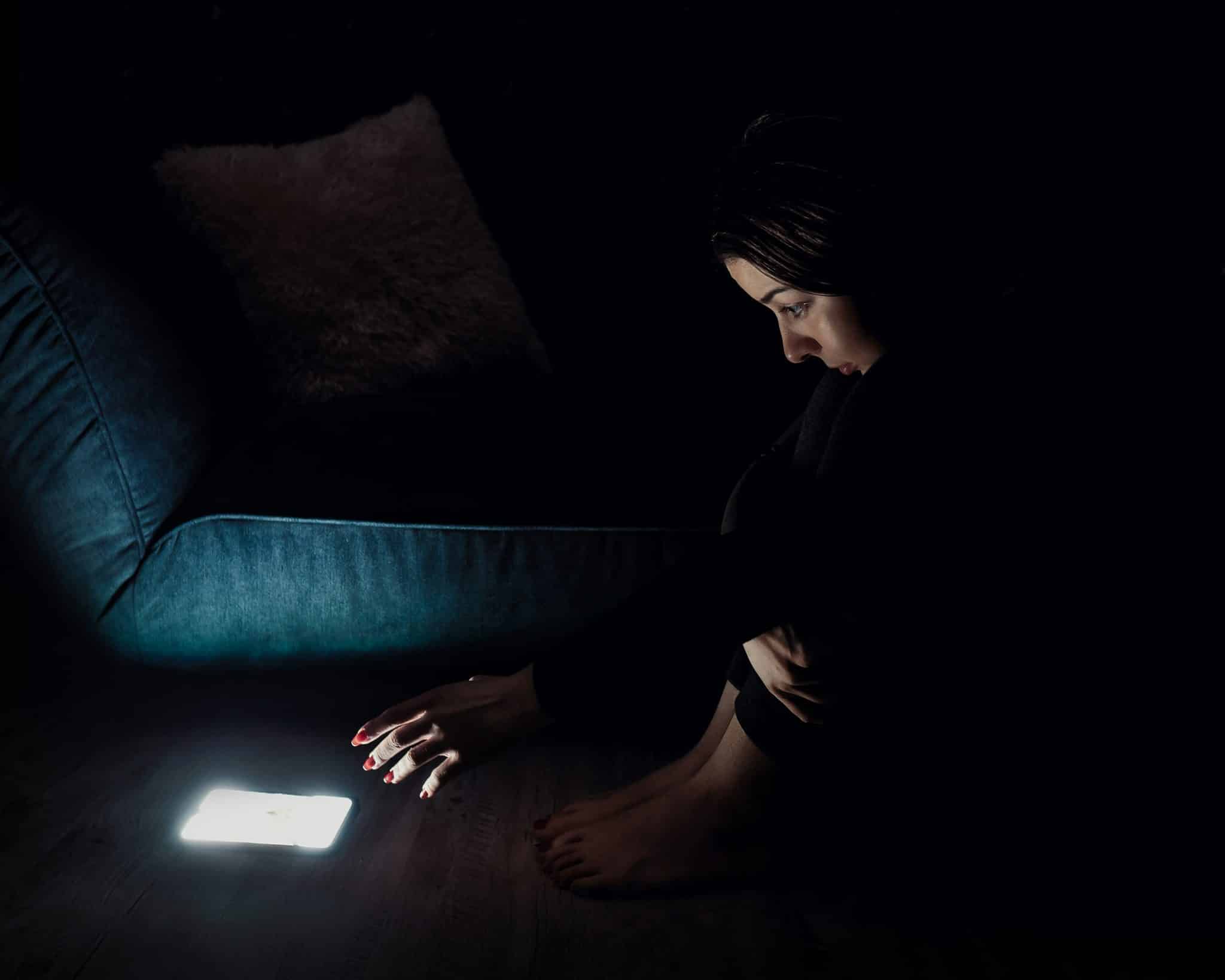Digital Wellness – What is it & Why Should You Make it a Priority This Year?

Make this the year you build a sustainable relationship with tech
With 2023 quickly approaching, there’s no better time to start reflecting on how the past year has treated you. How much time did you spend making memories with family and friends? Did you meet all your Q4 goals? Are there any habits you want to quit — or start?
And what about your digital lifestyle? How do you feel about your ability to manage screen time with downtime and work time? If you’re like most people (ahem, myself included), you probably haven’t yet found the ideal digital balance. And that’s okay!
But if we’re going to be our best selves in 2023, it’s time we found ways to make our relationships with tech sustainable. It’s what we deserve!
Don’t worry: none of this involves going cold turkey on your smartphone. Instead, we’ll explore how to manage your digital wellbeing personally and professionally – as individuals and organizations.
So let’s set some resolutions that you can actually stick to, shall we?
We consume so much technology that many of us are hardly aware of the degree to which we rely on it.
What Is Digital Wellness?
At its core, digital wellness is a simple concept. It’s just about creating a healthy and intentional relationship with your technology. Sounds easy, right? It can be.
But take an honest look at how much of your day is spent behind a screen. Do all those hours online feel habitual? Reflexive, even? We consume so much technology that many of us are hardly aware of the degree to which we rely on it. And that’s the problem digital wellness aims to solve.
True digital wellbeing is about consciously using technology to help us optimize our potential. It emphasizes using tech as a tool to succeed — not something to revolve our lives around. And this concept applies everywhere. It’s not limited to just your home or office life — finding a healthy tech balance with your personal social media is equally important as limiting your number of Zoom calls in a workday.
I mean, it’s great if you can do a digital detox as soon as you’re off the clock, but is it that beneficial when you’re consumed by a laptop, phone, tablet, and smartwatch at your 9 to 5? Probably not.
Finding digital wellness can be the first step to building happier, healthier relationships in every other aspect of our lives. From generating greater productivity by facing fewer distractions to improving mental health by boycotting the dreaded doomscroll, digital wellbeing is the gift that keeps on giving.

Digital Wellness as Employee Wellness
We’ve talked about employee wellness before, but I’ll give you a quick refresher. Employee wellbeing is comprised of five pillars that determine a work environment’s health: career wellbeing, social wellbeing, financial wellbeing, physical wellbeing, and community wellbeing.
Each of these areas supports one another — and all need to be prioritized for folks to thrive. Though digital wellbeing isn’t one of the standard components, it might as well be the sixth pillar these days.
True digital wellbeing is about consciously using technology to help us optimize our potential.
It emphasizes using tech as a tool to succeed — not something to revolve our lives around.
So what does that look like? Employee wellbeing is holistic, meaning every aspect of it matters. In this case, it’s about dedicating time and attention to building healthier tech habits the same way we aim for financial success, stable relationships, and work-life balance.
But we should also consider how employee wellness looks within the context of our online era. Forbes did exactly this, identifying four aspects of employee wellbeing in today’s digital age:
- Creating an employee-first wellness plan and culture.
- Prioritizing people.
- Building offline relationships with colleagues.
- Generating solid connections with the community.
Whether we look at employee wellbeing through the lens of a tech-focused world or explore digital wellness as a component of employee wellbeing, the two are undeniably linked. We can’t have one without the other!

Digital Wellbeing Is Crucial to Our Health and Productivity
Responsible tech use isn’t just about lowering screentime. (Though that helps too!) Consciously consuming content requires us to do more than just do a digital detox. We also need informed consent. So we first need to know the risks involved with using our devices.
While harm reduction is always crucial, it’s especially important in instances where we have less control over our online engagement. Say, at work, for example. Why? Because if we can’t lower our technology use, we need to find ways to limit the harm that chronic use can cause. And we’ll dive into that shortly. But for now, let’s build some awareness of the risks posed by overusing technology.
Some negative effects of overusing technology include:
- Mental health problems. Are you at risk for anxiety, depression, or other mental illnesses? You might want to rethink your smartphone use. Spending more time online puts you at a higher risk of developing mental and cognitive impairments. And it impacts mood too. Loneliness, boredom, and decreased self-esteem can all be linked to internet addiction.
- Reduced attention span. The attention economy is chronically competing for our focus, so much so that we now have shorter attention spans than goldfish. (Are you still reading?) Digital distraction demands our brain power, making it much harder to get anything done.
- Worsened creativity and ability to work deeply. Digital overload can be detrimental to your work life — even if your work life involves being online. Constant notifications pull you away from productive, deep work time, reducing the efficiency (and sometimes creativity and quality) of your output.
- Computer vision syndrome (CVS). Headaches, dry eyes, blurred vision: you guessed it, the result of too much screentime. Staring at monitors, mobile devices — anything emitting bright blue light — becomes quite harsh quite quickly.
- Relationship stress. No one wants to be a third wheel — especially to a smartphone. In a self-reported study, folks who experienced more “technoference” (aka tech-related interruptions) in a relationship rated in-person interactions with their partner as less positive than others.
- Lack of physical activity. Sitting in a chair all day seriously threatens your physical health — and chances are you log most of your screen time while staying sedentary. Prolonged sitting periods increase your risk of developing high blood pressure and blood sugar, cancer, and cardiovascular disease, among others.
- Poorer sleep quality. Blue light totally messes with our circadian rhythms. Plus, clocking all those late-night infinite scrolling hours equals less snoozing time. So don’t be surprised if fatigue and irritability rear their heads soon!

How to Find Your Digital Balance
Spending too much time staring at screens is clearly a recipe for disaster. But does that mean you have to go off-grid permanently? No way! Now, it’s all about finding ways to mitigate the risks of being excessively online. Humane technology use is possible — and achievable.
Examine Your Digital Habits
Using Sentient Digital’s framework, you can examine and understand your current relationship with tech through the 4 Cs of Digital Wellbeing:
- Control: When we use technology and if it’s on our own terms.
- Connection: Where and how we access technology, the personal and opportunity “costs” of being online.
- Content: How we interact with online communities and what we consume or contribute to them.
- Care: Noticing how our digital routines affect our overall wellbeing.
Reflect on how these 4 Cs influence your digital landscape. Are there certain areas in which you engage more mindfully than others? Where would you like to improve your relationship with technology?
This is a great way to start examining your habits online so you can engage more consciously with media.
You can still cultivate digital wellbeing even if your company relies heavily on technology. It’s all about looking for ways to manage the adverse effects of online overload.
Create a Sustainable Digital Experience
Sustainable changes are made up of many smaller steps. There’s no need to go off-grid entirely from here on out (unless you’re into that). Instead, try these simple steps to get you started on your path toward digital wellbeing:
Turn on “focus mode.”
Decide what you want to pay attention to, then block out the rest! With Freedom, you can do precisely that. Schedule a social media break, limit email access, shut off those notifications — anything that’ll help you stay focused! It’s all in your control.
Find another way to fill your time.
Reducing your hours online can leave you with major chunks of downtime. So find something else to do! Revisit old hobbies or learn a new skill you’ve always wanted to master. Pro tip: find something to do with your hands, like reading or knitting, to fill the space your devices leave.
Make some compromises.
Consciously consume tech by doing some negotiation. Approach it the same way parents may barter with their kids for screentime: “You can watch another episode, but you have to put away the laundry first,” for example. Or better yet, hit two birds with one stone and do them simultaneously. Try Facetiming while going for a walk or using voice-to-text instead of typing.
Power down before bed.
Avoid getting caught in a doomscroll sesh that keeps you up until 2 am. And don’t let that blue light interfere with your natural sleep patterns. Instead, put down all your devices (TV included!) at least half an hour before going to bed.
Keep tech off your nightstand.
Do you catch up on your social media feeds before you even say good morning to your partner or pets? I know you know this already, but that’s not the best AM routine. So make a new one instead! No phones until you’ve had your coffee. No emails until you get to work. Something along those lines.

How Companies Can Foster A Healthier Digital Lifestyle
Notice some unhealthy tech habits in your company? Leadership teams can create big changes by adjusting company culture and expectations. You have the power in your hands! Help your team shift to more humane technology use by starting with these tips (none of which involve giving up screens entirely).
Encourage asynchronous communication.
Adjusting your expectations regarding workplace communication alleviates the pressure to refresh your email page every 5 minutes. Moving away from this urgency culture makes space for folks to take time offline — and it also aids deeper work habits. Plus, employees can spend their days more focused on their actual jobs than talking about them.
Emphasize the right to disconnect.
Even if your region doesn’t have “right to disconnect” laws to protect workers’ freedoms to unplug from work mode when they’re off the clock, it’s always smart to implement them yourself. Encourage employees to ignore work matters outside their hours (except in urgent cases). They’re not on company time anymore!
Moving away from “urgency culture” makes space for folks to take time offline — and it also aids deeper work habits.
Build better boundaries with Freedom.
Setting your staff up with a digital wellbeing app like Freedom for Teams supports all of the tips mentioned above. Using Freedom, you can create your own personalized focus mode that lets you access the tools you need when you need them. Schedule time to unplug before bed, block work apps after hours, or set aside periods dedicated to specific tasks, like an email catch-up hour.
Create ergonomic atmospheres.
You can still cultivate digital wellbeing even if your company relies heavily on technology. Here, it’s all about looking for ways to manage the adverse effects of online overload. For example, invest in blue light-blocking glasses or light-adjusting apps like F.lux to reduce your team’s eyestrain. Or upgrade your offices to feature adjustable furniture like sit-stand desks and rotatable keyboard trays to encourage proper posture.
Consider other ways you can address the intersections of employee and digital wellness through DEI programs too! How about creating more green spaces? Or boosting staff’s insurance coverage for massage, physiotherapy, and mental health resources to compensate? There are many ways to make changes!

Find Freedom in Digital Wellness
Digital wellbeing is as crucial to your health and happiness as any other aspect of wellness. It’s all so connected! As our society grows increasingly tech-reliant, now’s the time to begin creating much-needed boundaries around your digital consumption. Even if the change is hard, your future self will thank you for getting started now.


